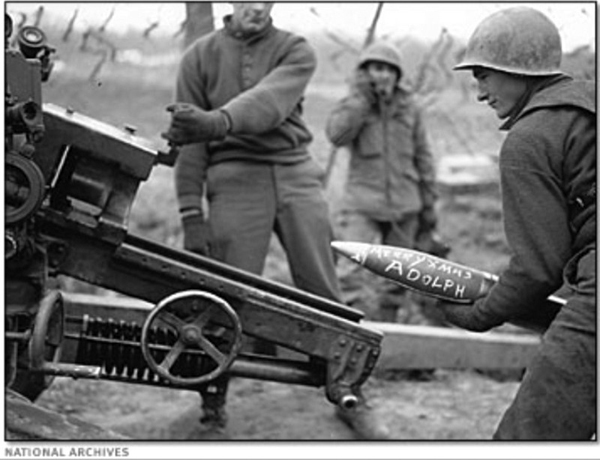
 My Belgium pen-pal/friend, Frans Kenstemont – the one who, at the age of just ten, witnessed the crash of the bomber in May of 1945 in which Sgt. Morris Van Treese (my uncle) and seven other airmen were killed – continues to be humbled by the sacrifices made by the U.S. and its Allies. An avid historian, Frans recently reminded me that Monday, December 16, marks the 75th anniversary of the Battle of the Bulge. No doubt most Americans know of this battle and the enormous sacrifices made by so many, but it seems fitting to reflect at this mementos anniversary.
My Belgium pen-pal/friend, Frans Kenstemont – the one who, at the age of just ten, witnessed the crash of the bomber in May of 1945 in which Sgt. Morris Van Treese (my uncle) and seven other airmen were killed – continues to be humbled by the sacrifices made by the U.S. and its Allies. An avid historian, Frans recently reminded me that Monday, December 16, marks the 75th anniversary of the Battle of the Bulge. No doubt most Americans know of this battle and the enormous sacrifices made by so many, but it seems fitting to reflect at this mementos anniversary.
Known as the Ardennes Counteroffensive, the Battle of the Bulge was the last major German offensive campaign on the Western Front during World War II. It was launched on December 16, 1944, and lasted until January 25, 1945. The densely forested Ardennes region of Wallonia is in eastern Belgium, northeast France, and Luxembourg. Germany’s purpose was to stop Allied use of the Belgian Port of Antwerp and to split the Allied lines. This would have allowed the Germans to encircle and destroy four Allied armies and force the Western Allies to negotiate a peace treaty in the Axis Powers’ favor.
 On the morning of December 16, 1944, the Germans achieved a total surprise attack against overwhelmingly superior forces, partly as a result of Allied overconfidence, preoccupation with Allied offensive plans, and poor aerial reconnaissance due to bad weather. As a result, American forces bore the brunt of the attack and incurred their highest casualties of any operation during the war. Of an initial 610,000 troops, 89,000 became causalities – some 19,000 were killed, and the remaining were either wounded, missing, or captured. In addition, approximately 3,000 civilians were killed.
On the morning of December 16, 1944, the Germans achieved a total surprise attack against overwhelmingly superior forces, partly as a result of Allied overconfidence, preoccupation with Allied offensive plans, and poor aerial reconnaissance due to bad weather. As a result, American forces bore the brunt of the attack and incurred their highest casualties of any operation during the war. Of an initial 610,000 troops, 89,000 became causalities – some 19,000 were killed, and the remaining were either wounded, missing, or captured. In addition, approximately 3,000 civilians were killed.
However, the battle so severely depleted Germany’s armored forces that they were unable to replace them. The German’s total strength had peaked at around 450,000 troops, out of which between 63,000 and 98,000 were either killed, missing, wounded, or captured.
Although the Germans managed to begin their offensive with complete surprise, they were not able to seize the initiative on the Western Front. Their losses were so severe that the Luftwaffe had been shattered, and the remaining forces throughout the West were being pushed back to defend the Siegfried Line – known in German as the Westwall, this was a defensive line built during the 30s to serve as a protective barrier.
The “Bulge” was the largest and bloodiest single battle fought by the United States in World War II, and it was the third deadliest campaign in American history.
